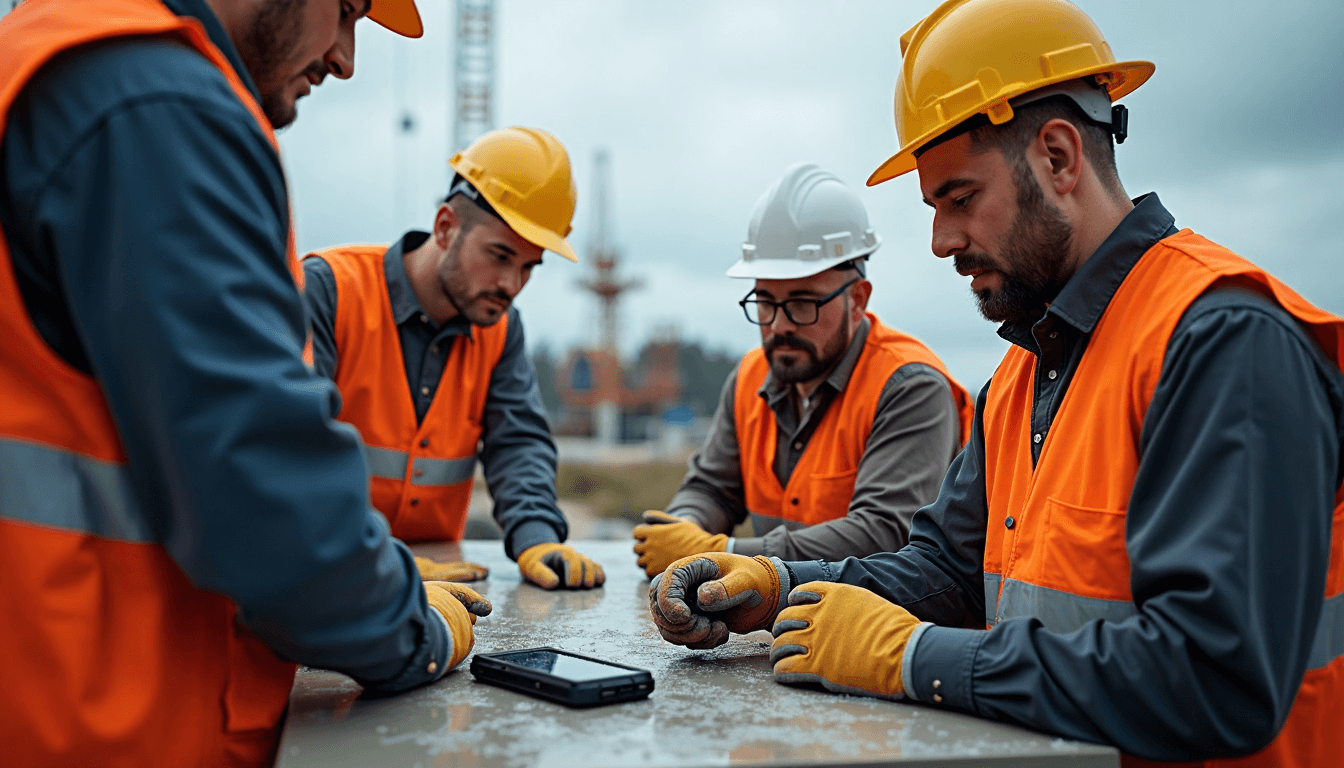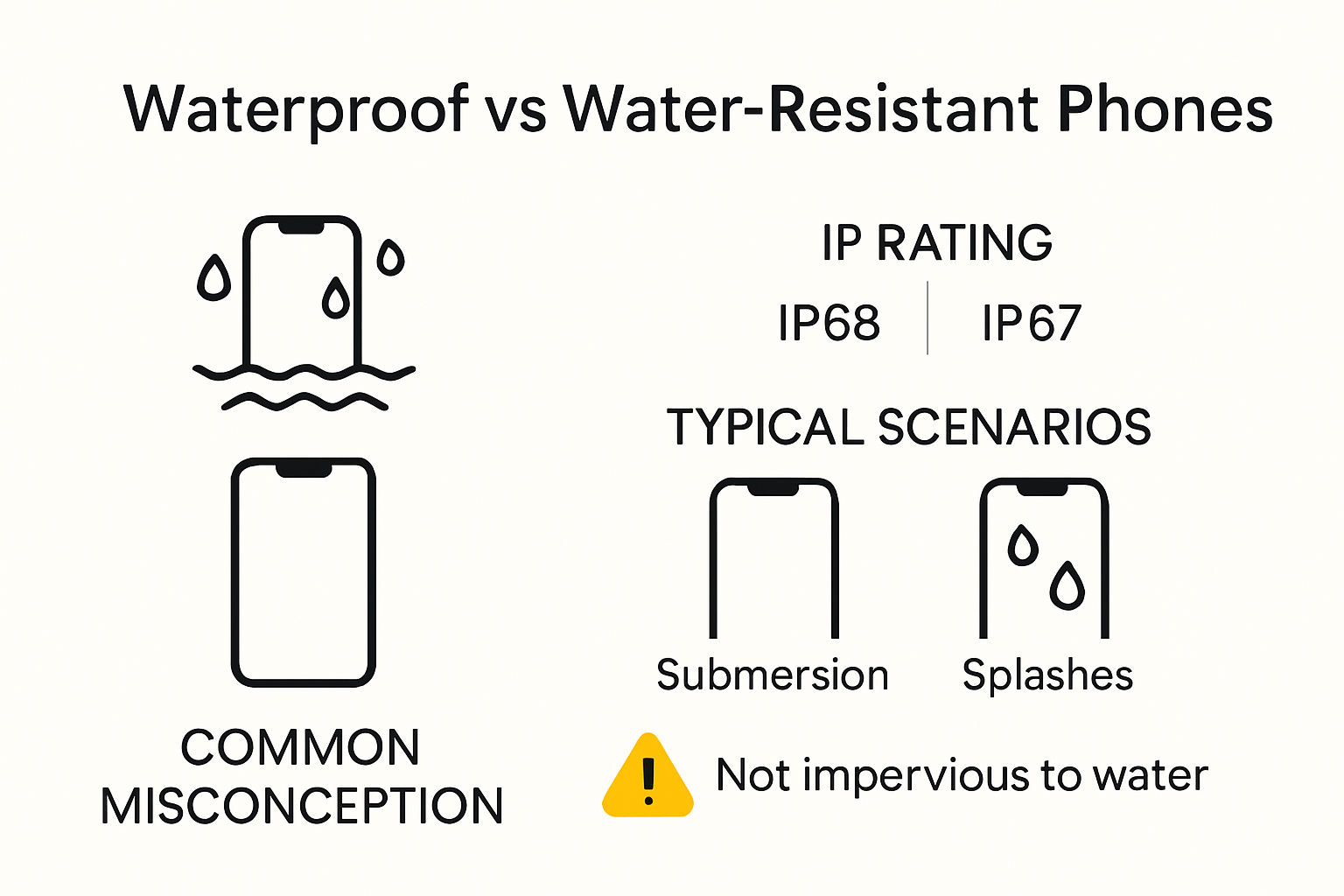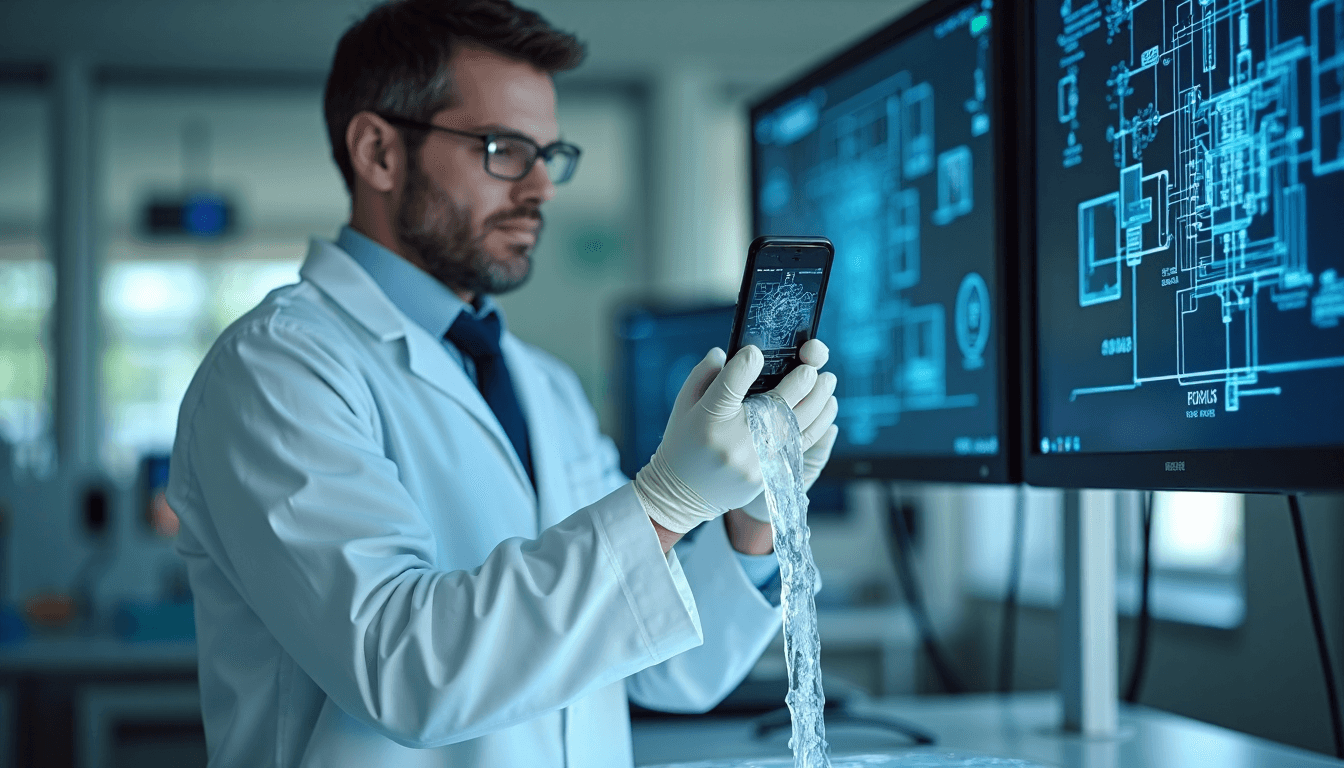
People think a waterproof phone can handle anything wet. Here’s the shocker. South Africa’s Advertising Standards Authority actually banned companies from calling any smartphone waterproof at all. Turns out, no phone is truly immune to water, even if the packaging says so. This legal twist could mean your next phone is a whole lot less invincible than you thought.
Table of Contents
- What Does Waterproof Phone Really Mean?
- Key Features and Industry Ratings Explained
- Why Waterproof Phones Matter for Professionals and Businesses
- Choosing the Right Waterproof Phone in South Africa and Beyond
Quick Summary
| Takeaway | Explanation |
|---|---|
| Water-resistant vs. Waterproof | Most phones labeled as waterproof are truly water-resistant, with specific limitations based on their Ingress Protection (IP) ratings. Understanding these ratings is crucial to avoid device damage. |
| Legal Implications of Claims | In South Africa, the Advertising Standards Authority has clarified that the term “waterproof” cannot be used by manufacturers as it implies absolute protection, which no smartphone provides. |
| Professional Durability Needs | Waterproof phones are essential tools in demanding professions, offering features that enhance durability and reliability in harsh environments. This helps reduce equipment replacement costs and operational disruptions. |
| Selecting the Right Device | When choosing a waterproof phone, verify its IP rating, check manufacturer warranty terms, and ensure it meets specific industry requirements to ensure optimal performance and protection. |
| Economic Considerations | While premium waterproof devices may cost more initially, their durability and reduced replacement frequency can lead to long-term savings for businesses. |
What Does Waterproof Phone Really Mean?
The term “waterproof phone” is widely misunderstood in the tech world. Contrary to popular belief, most smartphones are actually water-resistant, not completely waterproof. This subtle distinction can mean the difference between a functional device and an expensive paperweight after an unexpected water encounter.

Understanding IP Ratings: The Technical Truth
When manufacturers describe a phone as “waterproof,” they are typically referring to its Ingress Protection (IP) rating. According to International Electrotechnical Commission standards, these ratings provide a precise measurement of a device’s protection against solid particles and liquid ingress. The IP rating consists of two digits: the first indicates dust protection, while the second represents water resistance.
For example, an IP68 rating - common in modern rugged smartphones - means the device is completely dust-tight (6) and can withstand continuous immersion in water beyond 1 meter (8). However, this protection is not infinite or universal. Manufacturers specify exact conditions, such as depth and duration of water exposure.
Legal and Practical Implications
Interestingly, the Advertising Standards Authority in South Africa has taken a strict stance on waterproof claims. In a landmark ruling against Sony Mobile SA, they emphasized that “waterproof” implies absolute protection - which no smartphone truly provides. This highlights the critical difference between marketing language and technical reality.
Practical water resistance means your phone can survive:
- Accidental spills: Brief contact with liquids
- Light rain: Short-term exposure
- Splashes: Quick water contact
However, water resistance does not guarantee protection against:
- Saltwater exposure
- High-pressure water jets
- Prolonged underwater submersion
- Water damage from mechanical stress
Users must understand that water-resistant ratings are not permanent. Device seals can degrade over time, especially after drops or impacts. Warranty terms typically exclude water damage, making prevention crucial. Always check your specific device’s exact IP rating and manufacturer guidelines before exposing it to any liquid environment.
While water-resistant technology continues advancing, the core message remains: treat your smartphone with care, and never assume complete water immunity.
To clarify what real-world water resistance means and doesn’t mean, here’s a summary table mapping exposure types mentioned in the article:
| Exposure Type | Usually Protected? | Notes |
|---|---|---|
| Accidental spills | ✔️ | Brief contact only |
| Light rain | ✔️ | Short-term exposure |
| Splashes | ✔️ | Quick water contact |
| Saltwater exposure | ❌ | Not covered; can damage device |
| High-pressure water jets | ❌ | Not covered by standard ratings |
| Prolonged underwater submersion | ❌ | Limited duration and depth only |
| Water damage from mechanical stress | ❌ | Not covered; seals may degrade over time |
Key Features and Industry Ratings Explained

Waterproof phone technology represents a complex intersection of engineering precision and practical design. Beyond simple water resistance, modern devices incorporate sophisticated protective mechanisms that safeguard critical electronic components against environmental challenges.
Understanding Comprehensive Protection Standards
Ingress Protection (IP) ratings serve as the global benchmark for device durability. International Electrotechnical Commission standards provide a nuanced classification system that goes far beyond basic water resistance. The two-digit rating system offers manufacturers and consumers a standardized method of quantifying device protection.
The first digit in an IP rating indicates solid particle resistance, ranging from 0 to 6. A rating of 6 means complete protection against dust and particulate matter. The second digit represents liquid ingress protection, with ratings extending from 0 to 8. An IP68 rating - now standard in professional-grade devices - signifies total dust-tightness and the ability to withstand continuous water immersion.
Manufacturer-Specific Protection Variations
Interestingly, research demonstrates significant variability even among devices sharing identical IP ratings. For instance, the Samsung Galaxy S7 Edge and CAT S60 both carry IP68 certifications, yet their water resistance specifications differ substantially. The S7 Edge tolerates submersion up to 1.5 meters for 30 minutes, while the CAT S60 can withstand depths of 5 meters for an entire hour.
Key protective features in modern water-resistant phones include:
- Sealed Electronic Compartments: Precision-engineered gaskets and adhesives
- Hydrophobic Nano-Coatings: Microscopic protective layers
- Reinforced Port Covers: Preventing liquid entry through charging and audio interfaces
Warranty considerations remain critical. As manufacturer guidelines indicate, even high-rated devices come with significant caveats. Samsung and Apple explicitly state that water damage remains outside standard warranty coverage, emphasizing that water resistance is a temporary and conditional feature.
Professional users in industries like construction, marine operations, and field research require devices that transcend standard protection levels. Modern rugged smartphones now integrate advanced sealing technologies, thermal management systems, and impact-resistant materials to meet these demanding environmental challenges.
The evolution of water-resistant technology continues, with emerging innovations promising even more robust protection. However, the fundamental advice remains consistent: treat your device with respect, understand its specific limitations, and never assume absolute impermeability.
To illustrate the variation in protection amongst devices with the same IP rating, here’s a comparison table based on devices and durations mentioned:
| Device | IP Rating | Maximum Depth | Maximum Duration |
|---|---|---|---|
| Samsung Galaxy S7 Edge | IP68 | Up to 1.5 meters | 30 minutes |
| CAT S60 | IP68 | Up to 5 meters | 1 hour |
Why Waterproof Phones Matter for Professionals and Businesses
Professional environments demand technology that can withstand extreme conditions. Waterproof phones have transitioned from luxury accessories to essential tools for businesses operating in challenging landscapes, particularly across South Africa’s diverse industrial sectors.
Durability in Demanding Work Environments
Rugged smartphone technologies represent more than simple water resistance. They embody comprehensive protection strategies designed for professionals working in harsh conditions. Construction sites, mining operations, agricultural fields, and offshore environments require devices that can survive dust, water, extreme temperatures, and mechanical stress.
Devices meeting IP68 and MIL-STD-810H certifications offer unprecedented durability. These standards guarantee protection against continuous water immersion and survive repeated drops from significant heights. For instance, specialized rugged phones like the Cat® S42 are engineered to endure drops onto concrete, resist dust infiltration, and maintain functionality in temperatures ranging from -25°C to 55°C.
Critical Features for Professional Performance
Beyond water resistance, professional-grade waterproof phones offer strategic advantages:
- Extended Battery Life: Some rugged devices provide up to 22,000mAh battery capacity
- Enhanced Communication Reliability: Consistent performance in challenging environments
- Integrated Safety Features: Thermal imaging, GPS tracking, push-to-talk communication
Businesses across sectors like construction, mining, maritime operations, and field research benefit significantly from these specialized devices. A waterproof phone is not just a communication tool but a comprehensive work instrument that ensures continuous productivity and worker safety.
The economic implications are substantial. Traditional smartphones exposed to industrial environments typically fail within months, requiring frequent replacements. Professional-grade waterproof phones reduce equipment replacement costs, minimize operational disruptions, and provide reliable communication infrastructure in challenging work settings.
As technological demands evolve, waterproof phones are becoming fundamental rather than optional equipment. They represent a strategic investment in workplace efficiency, safety, and long-term operational resilience. Professionals who understand and leverage these advanced devices gain a competitive edge in increasingly complex and demanding work environments.
Choosing the Right Waterproof Phone in South Africa and Beyond
Selecting the ideal waterproof phone requires a strategic approach that balances technical specifications, professional requirements, and regulatory compliance. South African professionals and consumers must navigate a complex landscape of device capabilities and legal standards.
Understanding Regulatory and Technical Requirements
The Independent Communications Authority of South Africa (ICASA) mandates rigorous type approval processes for mobile devices, ensuring that waterproof phones meet comprehensive safety and technical standards. Before purchasing, consumers should verify that their chosen device has completed official conformance testing and carries the necessary certification.
Key considerations when selecting a waterproof phone include:
- IP Rating Verification: Confirm the specific IP68 or IP69K certification
- Manufacturer Warranty Terms: Understand water damage exclusions
- Industry-Specific Durability Requirements
Professional and Environmental Adaptation
Advertising Standards Authority guidelines emphasize the importance of understanding precise water resistance limitations. The International Electrotechnical Commission recommends examining manufacturer-specific specifications beyond general IP ratings.
Professionals in different sectors require tailored device capabilities:
- Construction: Shock-resistant devices with robust exterior
- Marine Operations: Extended water immersion tolerance
- Agricultural Sector: Dust and moisture protection
- Mining Industry: Extreme temperature resistance
Beyond technical specifications, consider additional factors such as battery life, thermal management, and integrated safety features. A waterproof phone for a maritime professional differs significantly from one designed for a construction worker.
Economic considerations are equally crucial. While premium waterproof devices represent a higher initial investment, they often deliver superior long-term value through reduced replacement frequency and enhanced durability. South African businesses must balance immediate cost constraints with long-term operational reliability.
Ultimately, selecting the right waterproof phone transcends simple water resistance. It represents a strategic decision integrating technological performance, professional requirements, and regulatory compliance. Professionals who approach device selection with comprehensive research will maximize their technological investment and operational effectiveness.
Frequently Asked Questions
What does ‘waterproof phone’ really mean?
Most phones labeled as waterproof are actually water-resistant, meaning they can withstand certain levels of water exposure, but no device is completely immune to water damage.
What are IP ratings and why are they important for waterproof phones?
IP ratings indicate a phone’s protection against dust and water. The first digit measures solid particle resistance (0-6) and the second digit measures liquid ingress protection (0-8). Higher ratings mean better protection.
Are waterproof smartphones actually covered under warranty for water damage?
No, most manufacturers, including Samsung and Apple, state that water damage is not covered under warranty, even if the phone has an IP rating indicating water resistance.
Why should professionals use waterproof phones?
Waterproof phones are essential for professionals in demanding environments, such as construction or marine sectors, as they offer enhanced durability, reliability, and can withstand extreme conditions, reducing replacement costs.
Ready for Real Protection in the Field? Upgrade Your Tech with Solutions You Can Trust
If you have ever worried about your phone surviving a South African worksite or outdoor job, you know the frustration of misleading ‘waterproof’ promises. This article makes it clear that most devices are only water-resistant and warranties may not cover water damage. If reliability and durability are critical in your business or personal life, choosing the right rugged technology has never been more important. At PMC Jewellery, you will find rugged smartphones and professional gear built to handle every challenge the South African environment throws your way. Our range, including leading brands like Ulefone, Blackview and DOOGEE, meets tough industry expectations and supports those working in construction, security and outdoor fields where equipment cannot fail.

Step up to real peace of mind by choosing expertly-rated, fully compliant devices. Visit our PMC Jewellery store for rugged phones, advanced electronics and accessories with the proper protection ratings explained in this article. Do not risk another costly mistake. Secure your business or next adventure with proven technology today.
Recommended
- Sparkle in Style with our Exquisite White Gold Crystal Necklace – PMC Jewellery
- For Samsung Galaxy Watch 3 41mm Discoloration in Light TPU Watch Band( – PMC Jewellery
- For Samsung Galaxy Watch 3 45mm Discoloration in Light TPU Watch Band( – PMC Jewellery
- For Samsung Galaxy Watch 3 41mm 20mm Carbon Fiber Striped Silicone Wat – PMC Jewellery
- For Samsung Galaxy Watch 3 45mm Discoloration in Light TPU Watch Band( – PMC Jewellery
- L21 1.69 inch TFT Screen Smart Watch,Support Blood Pressure Monitoring – PMC Jewellery
